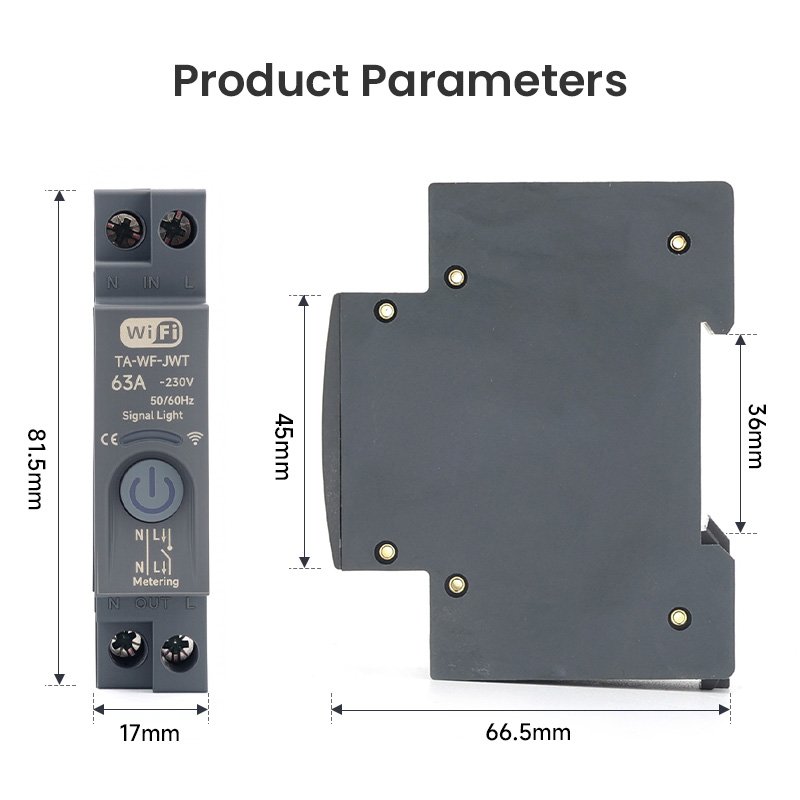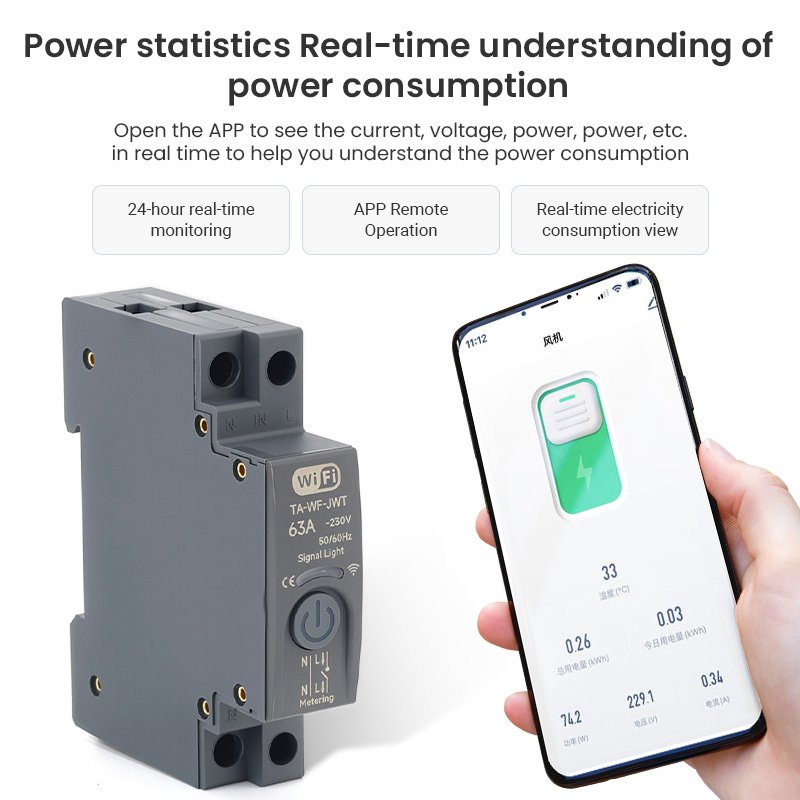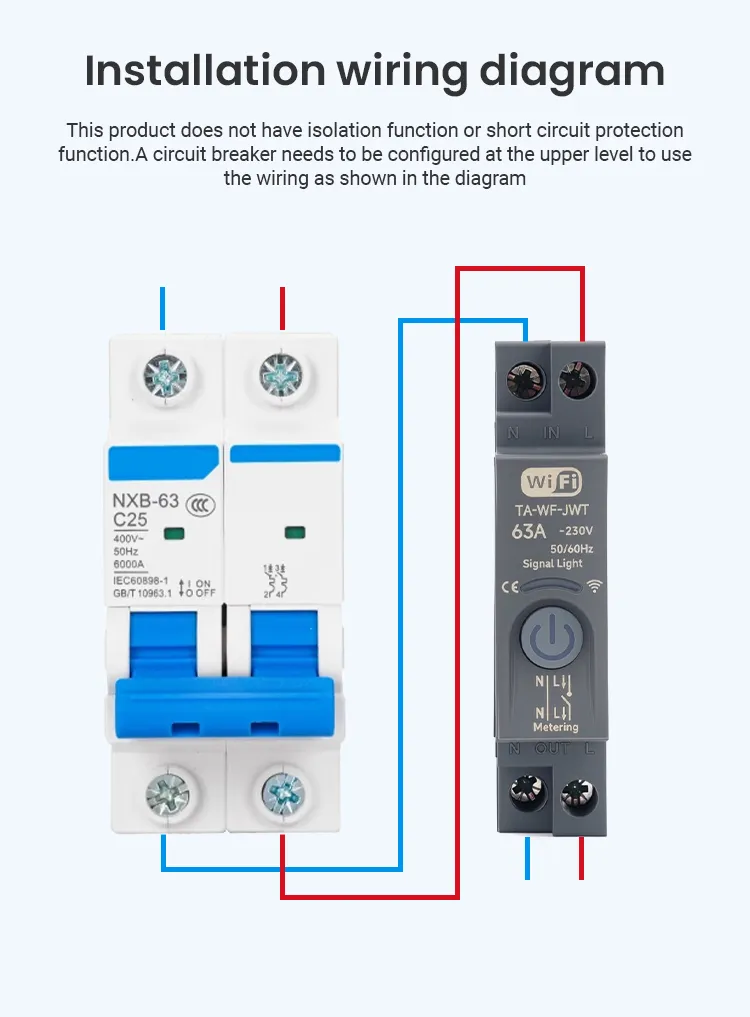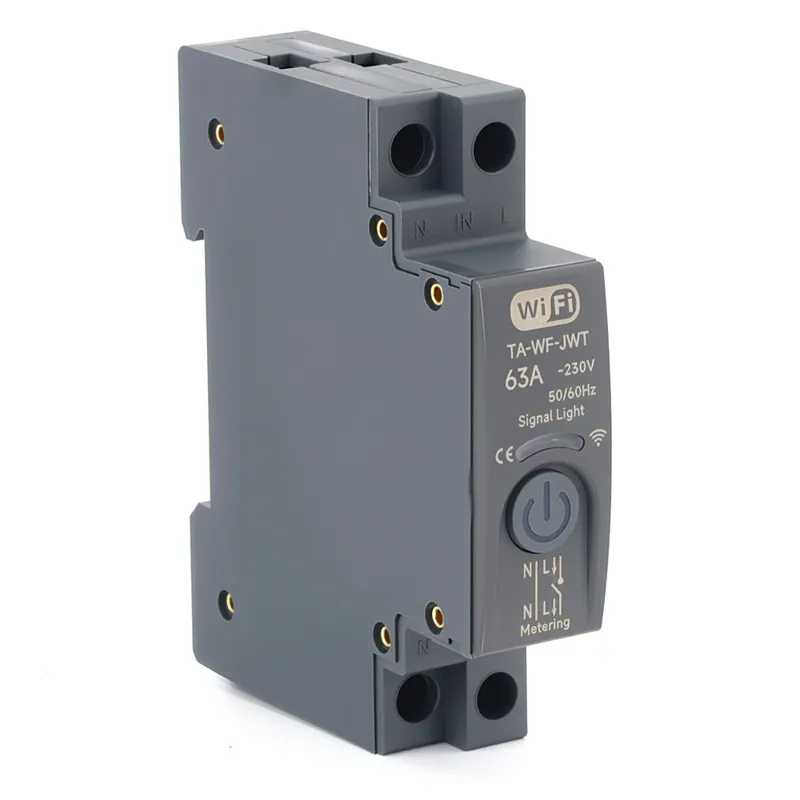Smart Circuit Breaker
Smart Circuit Breakers are advanced electrical protection devices that combine traditional circuit breaker functions with modern smart technology.
They provide real-time monitoring of electrical parameters such as voltage, current, and power consumption, allowing users to remotely control and manage their electrical circuits via mobile apps or smart home systems.
What Is a Smart Circuit Breaker?
A smart circuit breaker is an advanced electrical protection device that combines traditional circuit breaker functions with integrated electronic controls and communication capabilities.
Unlike conventional breakers, it can monitor electrical parameters in real time, transmit data remotely, and be controlled via smartphones or building management systems.
This enhances electrical safety, energy efficiency, and system automation.


How Do Smart Circuit Breakers Work?
Smart circuit breakers have two main components:
Electromagnetic part: Operates like a standard breaker, providing overload and short circuit protection by physically breaking the circuit during faults.
Electronic part: Includes control and communication modules on one or more circuit boards. These modules collect data such as current, voltage, and temperature and communicate with remote devices via Wi-Fi or other protocols. Users can remotely monitor status, receive alerts, and control the breaker settings.


Key Features and Benefits
Remote Monitoring & Control: Operate breakers via apps or integrated systems without on-site interaction.
Real-Time Data Collection: Monitor energy consumption, fault events, and circuit loads to optimize usage.
Enhanced Safety: Quick detection and isolation of faults to prevent equipment damage and fire hazards.
Automation & Scheduling: Program breakers to respond automatically to load conditions or schedules.
Energy Efficiency: Track detailed consumption, enabling reduced waste and lower energy bills.
Predictive Maintenance: Alerts for abnormal conditions help prevent downtime.


Applications
Smart circuit breakers suit a variety of settings:
Residential: Home energy management, appliance control, and safety.
Commercial: Building automation, lighting control, and load management.
Industrial: Power distribution monitoring, equipment protection, and predictive maintenance.
Data Centers: Reliable energy management and fault detection.
Renewable Energy Systems: Efficient load balancing and system protection in solar and wind power installations.
How Smart Circuit Breakers Differ from Traditional Ones?
| Feature | Traditional Circuit Breakers | Smart Circuit Breakers |
|---|---|---|
| Connectivity | None | Wi-Fi/Bluetooth, remote control |
| Monitoring | No real-time data | Real-time energy consumption & fault data |
| Operation | Manual reset only | Remote reset and control |
| Automation | None | Scheduling, load management |
| Safety Features | Basic overload and short circuit | Enhanced diagnostics, predictive alerts |
| Maintenance | Manual inspection | Predictive, data-driven |
How to Choose the Right Smart Circuit Breaker?
Consider the following factors:
Current Rating: Must match or exceed your maximum circuit load.
Voltage Compatibility: Ensure breaker voltage rating matches your system.
Breaking Capacity: Should handle the highest possible fault current safely.
Communication Protocols: Choose breakers compatible with your existing smart systems (e.g., Modbus, Wi-Fi).
Additional Features: Such as remote reset, energy monitoring, automation capabilities.
How to Install Smart Circuit Breakers?
Installation is similar to traditional breakers with added steps for connectivity:
Identify input/output terminals and phase/neutral wires.
Connect input power lines to the breaker, and output lines to the protected load.
Connect neutral and live wires as marked.
Install Wi-Fi antenna or communication module if present.
Use the manufacturer’s app or software to pair the breaker and configure settings.
Test breaker operation remotely and locally.
Important: Always follow safety standards and consider professional installation if unsure.



